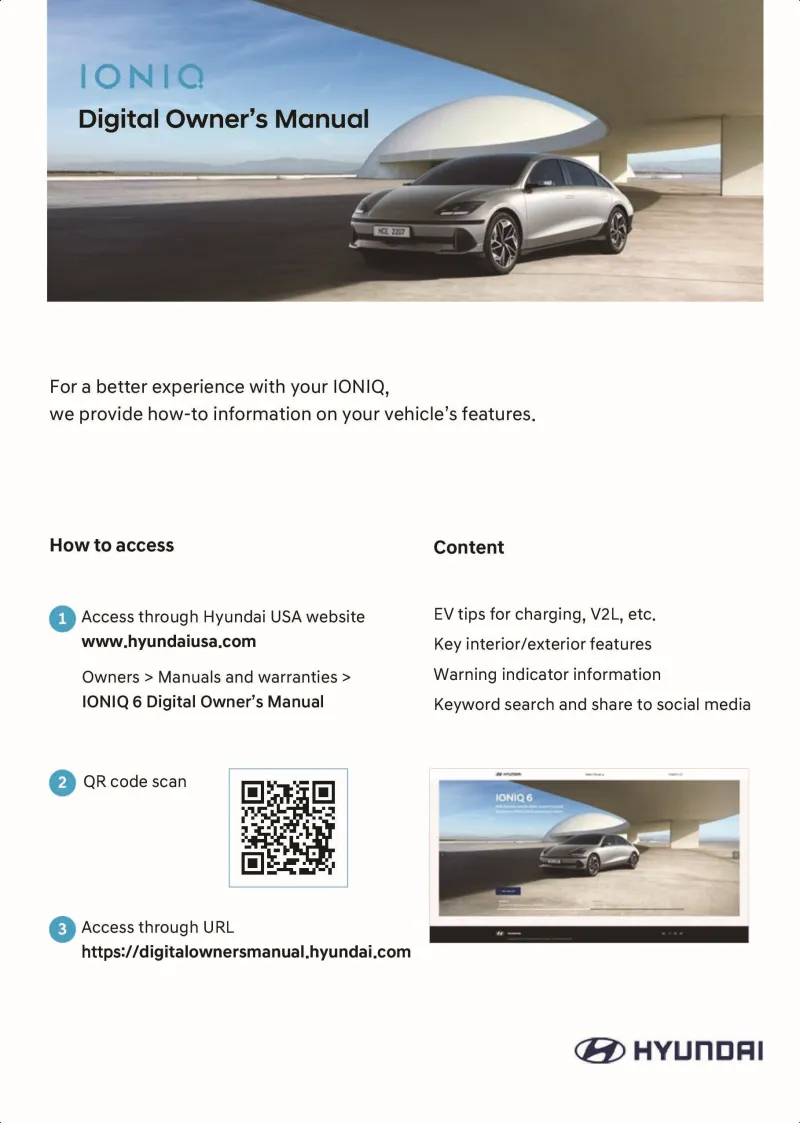2024 Hyundai Ioniq 6 Owner's Manual

Table of Contents
2024 Hyundai Ioniq 6 Overview
Introduction
The 2024 Hyundai Ioniq 6 emerges as a stunning addition to the electric vehicle landscape, promising a blend of sleek design, cutting-edge technology, and sustainable performance. With an aerodynamic silhouette that maximizes efficiency and an interior designed for comfort, the Ioniq 6 is set to captivate environmentally conscious drivers who refuse to compromise on style and performance.
Powertrains
The Ioniq 6 offers an impressive array of powertrain options tailored to suit various driving preferences. Standard will be a robust single-motor setup delivering exceptional efficiency, with a peak output of 225 horsepower, ideal for daily commuting. For those seeking a more dynamic experience, a dual-motor all-wheel-drive variant unleashes 320 horsepower, enhancing acceleration and traction. Both configurations feature Hyundai’s innovative Electric-Global Modular Platform (E-GMP), ensuring smooth handling and impressive range capabilities that can exceed 300 miles on a single charge.
Trims
The 2024 Ioniq 6 will be available in multiple trims, catering to diverse tastes and budgets. Starting from the well-equipped SE, it offers essentials like a digital cockpit and advanced safety features. The SEL trim adds premium amenities, including wireless charging and heated seats, while the top-tier Limited trim boasts luxurious touches such as premium audio and panoramic sunroof, maximizing both comfort and style.
Features
Packed with the latest technology, the Ioniq 6 includes an intuitive 12.3-inch touchscreen infotainment system, seamlessly integrated with Android Auto and Apple CarPlay. Hyundai’s SmartSense suite of safety features comes standard, offering advanced driver assistance technologies like adaptive cruise control and lane-keeping assist to enhance peace of mind.
Owner's Manual
The 2024 Hyundai Ioniq 6 arrives with a comprehensive owner's manual, providing valuable insights on features, maintenance, and troubleshooting. The manual also emphasizes the vehicle's sustainability credentials and guides owners in maximizing battery life, ensuring an enriching driving experience for every user.
User manual download
The Hyundai Ioniq 6 owner manual for the 2024 model year is to be found in PDF downloadable format on this page. The owner manual for the model year 2024 is free and in English, but the repair manuals are usually not easy to get and may cost more.
Manual Questions
Fill the form below and someone will help you!
